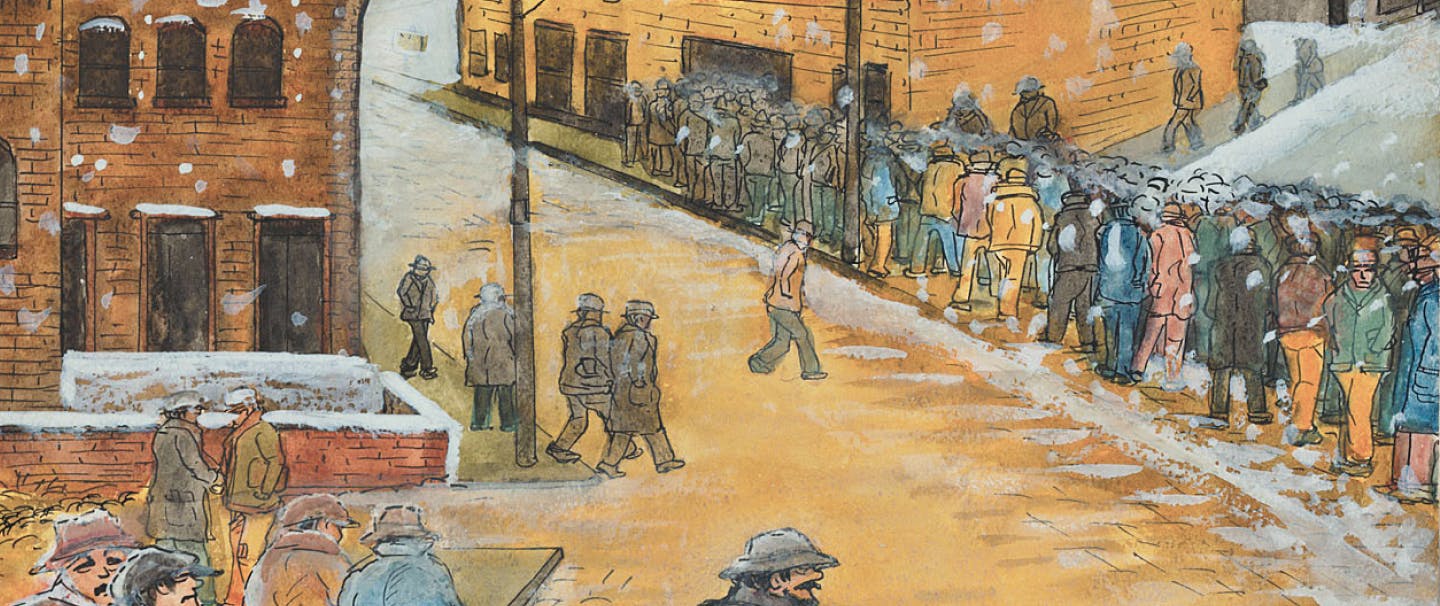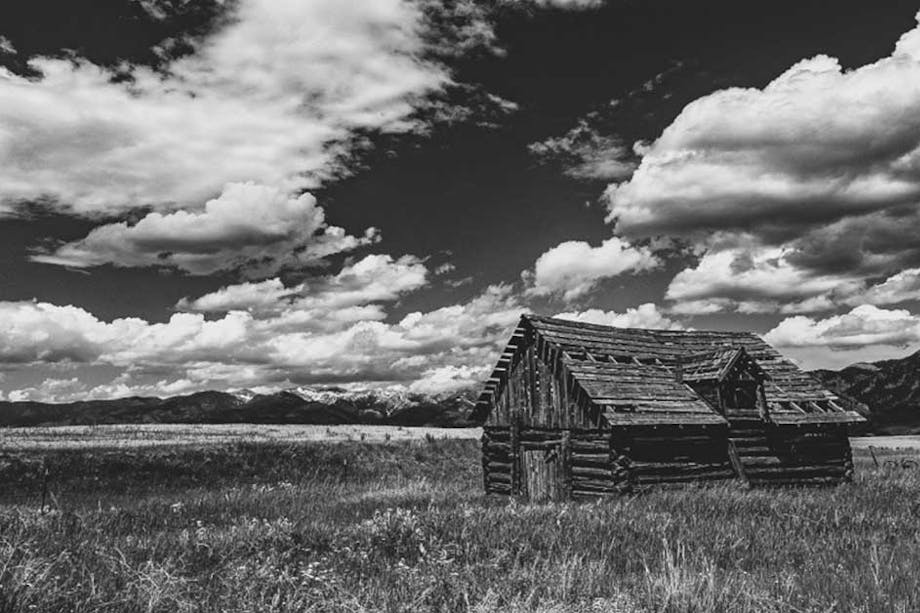The term “skid road”—or “skid row”—has its origins in the lumberjack camps of the Pacific Northwest dating back to the earliest pioneer days, where teams of oxen and horses would haul out cut timber along a road carved out of the wilderness. This road would have wooden slats greased with bacon grease or other lubricants on hand, to ease the pulling of logs over them and out to the sawmills. In the 1850s, this area in Seattle was defined by sawmills and the surrounding steep hills leading to them, where logs were skidded down the hills. Yesler Way leading down to the Henry Yesler Mill was one such route.

Sketch of Yesler Lumber Mill in Seattle 1860’s. This image appeared in the County Road Engineer’s Fifth Annual Report (1939) on page 32. The same image appeared in Clarence Bagley's "History of King County" (1929) on page 31. Neither book cites the original source. Photo provided by Seattle Public Library, Special Collections
THE LOGGING TERM BECAME AN ADJECTIVE,
AS WELL AS A PLACE NAME DURING
THE GREAT DEPRESSION
Skid road has taken on a different name interpretation overtime in Seattle and across the country. In the 1930s at the height of the Great Depression, the term “Skid Row” was widely used to describe certain areas or neighborhoods of many U.S. cities and towns, where those who had fallen on hard times dwelt in poverty and despair. It soon became an adjective as well as a place name, where it defined the poor state existence or conditions–a Skid Row hotel, a soup kitchen on Skid Row. The term was used generally to identify somebody down on their luck, and as a group identifier for those unemployed or temporarily engaged in temporary labor-intensive work, such as fighting fires or picking apples during harvest time. When someone “hit the skids” it was usually not a complimentary description for one’s situation.
Another, more recent example of the term’s adoption was The Merchants Café in downtown Pioneer Square, which in 1986 named its lounge Skid Row as a local watering hole for tourists and residents alike. An artist from the Pacific Northwest who lived through the Great Depression, Ronald Debs “Ray” Ginther, documented many scenes of life on Skid Road in Seattle, Portland, and other cities during the 1930s and into the 1940s. Ginther was a cook by profession, who painted and sketched in his spare time. The majority of his Depression-era artworks were watercolors painted onto pieces of cardboard, a material he used because it was readily available and free.



Ginther’s work is a gritty depiction of life on Skid Road. One scene shows the basement of a “transient flophouse” in 1934, men sprawled across the bare floor. Another view pictures two homeless men carrying sacks of food through the winter night on Christmas Eve, their shoulders hunched against the cold. Ginther was an advocate for the disadvantaged, the minority, the downtrodden, and employed his art to tell their stories. The term found a widespread readership in 1951 when author Murray Morgan published his book about Seattle titled Skid Road: An Informal Portrait of Seattle. By 1999, approximately a quarter-million copies of the book had sold nationwide.







